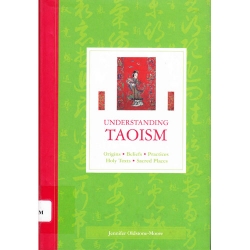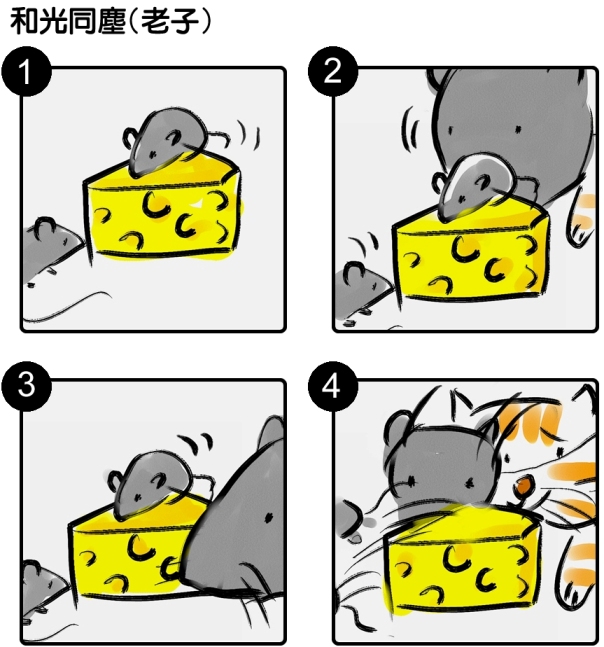Understanding taoism
 |
|
書的說明:
INTRODUCTION
The principal focus of Taoism is the Tao (meaning "Way," or "path"), which refers to a nameless, formless, all-pervasive power which brings all things into being and reverts them back into non-being in an eternal cycle. The tradition stresses the importance of following the way of the Tao—that is, of taking no action that is contrary to nature, and of finding one's place in the natural order of things. Understanding the pattern of the Tao includes the ability of trained specialists to control spiritual powers, which are either inferior to the Tao or emanations of it. Overall, the concept of the Tao provides a structure for making sense of the change of seasons, the life-cycle of creation, and the individual's place in the world.
Taoism has had a significant impact on the development of Chinese civilization and its ideas pervade virtually all aspects of the culture (see pp.97-103). Some of Taoism's most surprising contributions to Chinese and world civilization have been scientific. In the course of deciphering the pattern of the natural world in order to benefit humankind, a number of important discoveries were made. For example, the search for the "elixir of immortality" led not only to the invention of gunpowder (see p. 100), but also to notable advances in Chinese medicine (see p.36 and pp.90—91). In the effort to align human life with cosmic energy, the magnetic compass was also devised—its first use was in feng-shui, the art of fixing the most auspicious site for buildings and structures.
Despite its influence on Chinese civilization, Taoism has been notoriously difficult to define—this is largely attributable to the many different and distinctive forms the tradition has adopted throughout its history (see pp. 14-18). This historical complexity is partly due to the fact that Taoists have always been willing to absorb new ideas, personalities, and practices, including philosophical discourses, fresh revelations, the activities and techniques of shamans and makers of elixirs, and various deities. The schools of Taoism have never been united under a central authority, and the development of systematic teachings has not been an overriding concern, although there is an organic unity in the various expressions of Taoism, particularly in the quest for longevity.
The Taoist contribution to Chinese religious practice and belief has been both overt and subtle. It is highly visible in some of the most important rituals, notably healing rites and funerals, and in techniques to attain immortality. However, in most other areas of religious practice its presence is less obvious. Chinese religion is an amalgam of the "Three Teachings" (Confucianism, Taoism, Buddhism) and the folk tradition. All three formal teachings provide methods for self-cultivation and transformation, but have different approaches which reflect concerns specific to each. Confucianism primarily addresses matters of government and social behavior. Buddhism provides an elaborate cosmology, a structured priesthood, and a detailed theory of the afterlife. Taoism meets other needs, and offers methods of spiritual and physical healing, a means of commerce with the spirit world, and securing blessings and protection. The popular tradition is typified by practices that vary by region; the worship, both locally and nationally, of hosts of deities; and by folk beliefs that cannot be categorized as coming from any of the formal traditions. Of the three major teachings, Taoism is the most closely linked to the popular tradition, but has remained distinct from it.
Relatively few people identify themselves as exclusively Taoist or Confucian, and there is considerable evidence to suggest that many members of the historic Confucian literati were also practitioners of Taoist arts. In the modern era, just as in the past, rather than professing a single doctrinal affiliation most Chinese people draw simultaneously from elements of all the teachings. Religious holidays reflect this syncretism— few of them can be identified as belonging specifically to any one tradition and most reveal influences from all the traditions. Taoist concerns and practices are clearly expressed in the quest for longevity and in sensitivity toward the seasonal patterns of change in nature.
Historically, Confucianism and Taoism have always served as foils for each other, and are examples of yin-yang complementarity in Chinese religion: the image of the worldly Confucian is contrasted with the Taoist recluse seeking an escape from human concerns; and the Confucian observance of the rules of etiquette is set against the Taoist's frequent flouting of social convention. Similar divisions we're, and still are, often apparent within individuals: for example, a person may exhibit Confucian values in their professional life, but express Taoist qualities when retired or relaxing with friends—particular modes of being are chosen when considered most appropriate.
Despite the fact that Taoism is an essential element of East Asian culture, with an extensive literature and significant history, knowledge of Taoism has been, until recently, largely limited to a few philosophical texts. This is partly due to the nature of the Taoist canon itself—the abstruseness of many of the texts made them extremely difficult to decipher. As a rule, the canon was not studied by the Confucian elite who, for political reasons, were sometimes at odds with Taoist clergy. Additionally, very few copies of the canon were available until the twentieth century. Western scholars were also slow to begin serious study of Taoism, in comparison with Buddhism and Confucianism. Influenced by the biases of some prominent Chinese scholars, many of the first Western scholars of Chinese religion were missionaries who were appalled by the Taoist magical and exorcistic traditions. To their eyes, Taoism, as practiced by priests and people, seemed to be a debased and superstitious version of the lofty and philosophical tradition of antiquity. It was only in the latter half of the twentieth century that Taoism's complex, elaborate religious tradition began to be plumbed and appreciated—this process was assisted by recent archeological discoveries in tombs at Ma-wang-tui and Kuo-tien (Mawangdui and Guodian).
In addition to being a major component of Chinese society, Taoism also made an impact on Korean, Japanese, and Vietnamese civilizations, all of which were influenced by Chinese culture in the early centuries of the Common Era. Taoism's presence was relatively understated in these countries, and the tradition was integrated unobtrusively with local religious practices, especially nature cults, geomancy, divination, and shamanism. This influence became increasingly diffuse in later centuries. Many practices affiliated with Taoism, such as t'ai-chi ch'üan, ch'i-kung, acupuncture, and traditional Chinese medicine, continue to thrive, not only within East Asia, but outside the region as well.
The Taoist priesthood is strong in Taiwan, and Taoist communities have reappeared in mainland China in recent decades. Taoism has made inroads in the West too, where the availability of numerous translations of the Tao Te Ching have helped to boost its popularity and contributed to the establishment of a few nascent Taoist organizations and religious communities. There has also been a move to develop a Taoist-inspired ecology. Part of Taoism's appeal to Westerners undoubtedly lies in its naturalistic mysticism and in its concept of a universe in which humans and the natural world are integrated.
您的評論: 注意: 評論內容不支持HTML代碼!
顧客評分: 差評 好評
請在下框輸入驗證號碼:




